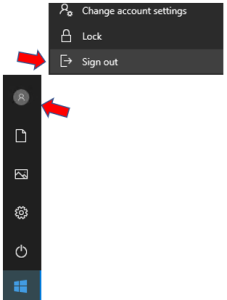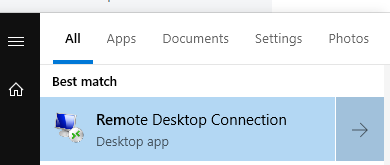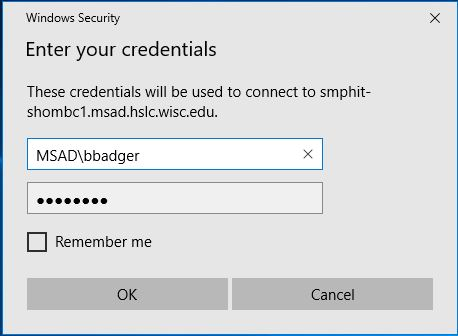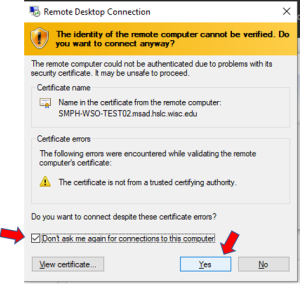| HTML |
|---|
<div style="background-color: yellow; border: 2px solid red; margin: 4px; padding: 2px; font-weight: bold; text-align: center;">
This page was moved to <a href="https://kb.wisc.edu/134068">kb.wisc.edu/134068</a>
<br>
Click in the link above if you are not automatically redirected in 10 seconds.
</br>
</div>
<meta http-equiv="refresh" content="5; URL='https://kb.wisc.edu/134068'" /> |
Please do not power off your work desktop before leaving the office. Simply Sign-out - Press the Start Menu, select the Person icon, then select Sign out.
From a Windows Computer
| Anchor | ||||
|---|---|---|---|---|
|
- Connect to GlobalProtect VPN
- Press the Start Menu and type GlobalProtect, then select GlobalProtect to launch the application.
- If GlobalProtect is not listed, and you are on a work computer, email Shared Services IT at desktop.support@med.wisc.edu to have GlobalProtect installed. GlobalProtect is installed on all SMPH IT managed computers as standard software.
- If GlobalProtect is not listed, and you are on a personal computer, see https://kb.wisc.edu/91915 for download and installation instructions.
- Press the Start Menu and type GlobalProtect, then select GlobalProtect to launch the application.
b. If you are asked for a portal address, enter uwmadison.vpn.wisc.edu
For PHS, PHI, or SHOW user portal: smph.vpn.wisc.edu
c. Press Connect
Verify portal address, enter your NetID and Password, then press Sign In
d. You should see a Connecting message and then GlobalProtect with disappear
e. If the connection was successful, you will see a blue globe in the System Tray (bottom right of computer). If needed, press the up arrow to show System Tray icons.
2. Launch Remote Desktop and connect to Work Computer
- Press the Start Menu and type Remote Desktop Connection, then select the application.
b. Enter your work computer name under Computer name and select Connect.
*See below instructions to lookup your work Computer name.
*** If you do not know your work computer name ***
Open a browser and go to the following address (NetID Login Required)
https://it.med.wisc.edu/ad/computerlookup.php
- Site will list most recently logged into computers **(note, you may have to copy the above link and paste it into internet address bar)
- Enter your credentials
- For Username, type in the same credentials you use to login to your work computer, with the exception of adding MSAD\ or AD\ before your name.
- Enter MSAD\Username if your computer name ends in msad.hslc.wisc.edu and enter AD\ if your computer name ends in ad.wisc.edu.
- Please reference "If you do not know your work computer name" above for full computer name.
- Enter MSAD\Username if your computer name ends in msad.hslc.wisc.edu and enter AD\ if your computer name ends in ad.wisc.edu.
- For Username, type in the same credentials you use to login to your work computer, with the exception of adding MSAD\ or AD\ before your name.
- Enter your credentials
- Site will list most recently logged into computers **(note, you may have to copy the above link and paste it into internet address bar)
Example: MSAD\bbadger or AD\bbadger
*** If you get a message indicating the remote computer could not be authenticated due to problems with the security certificate ***
- Check the box "Don't ask me again for connections to this computer", then press Yes.
To Disconnect, select Start, then select the Person icon, then select Sign Out.
...
From your Windows work computer
...
Click "Select Users". For HSLC Staff, it should list MSAD\Domain Users. For all other staff, it should list AD\Domain Users. If it does not, you can click "Add" and put in Domain Users (with space) and add it
...
You can sign out / log off of the computer when you leave work, or leave the session running by hitting CTRL+L to "lock" the session. This way you can remote in from home and resume where you left off.
When finished with a remote session, you can log off if you are finished with the computer, or close out with the "X" on the remote desktop toolbar if you plan to resume your existing session later.
...







